Old Southern Highlands Style for a New North Carolina Retreat
When a pair of Florida retirees decided to return part-time to their home state of North Carolina, they asked architect Al Platt in Brevard to design a new house that looked like an old Southern Highlands homestead. “They just wanted a house that fit the vernacular of this place,” Platt says.
The architect figured that the best way to achieve this would be by using reclaimed wood. “It imparts a feeling of age,” he says. “It almost disappears into the forest. And it’s very low maintenance.”
The resulting house, completed by Morgan Keefe Builders earlier this year, wraps the residents in a cocoon of antique woods: aged chestnut on the walls, hemlock on the ceilings and oak underfoot. Salvaged bricks were sliced into wafers and used to pave the lower level. And reclaimed timbers were stacked in front, log-cabin-style, making the rambling house look like a mountain shack that was expanded over several generations — instilling an instant sense of history without compromising the conveniences of today.
Houzz at a Glance
Who lives here: This is a part-time home for a retired couple from Florida.
Location: Cashiers, North Carolina
Size: 5,847 square feet; 5 bedrooms, 7 bathrooms
Year built: 2013
Photography by J. Weiland
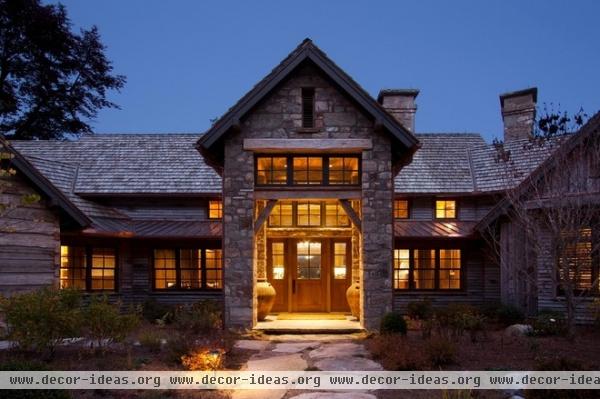
The siding is salvaged pine from snow fencing that once lined the roadways of Wyoming. “The husband wanted a house with a vintage appearance that would blend into the forest and be made of highly natural materials,” says Platt.
The architect avoided extraneous adornment, preferring to let the weathered wood provide all the visual interest. “There’s nothing applied just to decorate things,” he says.
A hallway (far left) was framed in stacked timbers from Appalachian Antique Hardwoods. The structure looks like it might have started out as a freestanding cabin.
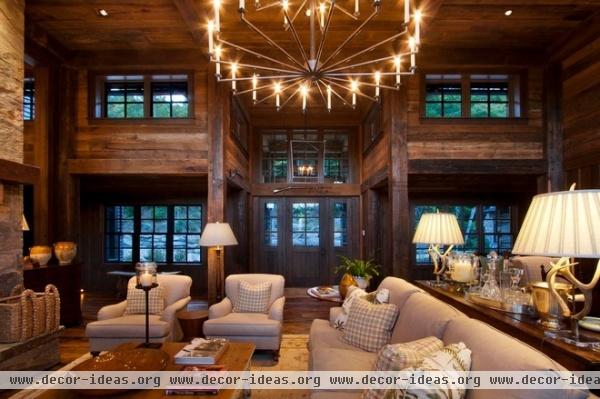
The homeowners prefer dark finishes, which proved challenging for the architect, who compensated by incorporating lots of transom windows and several skylights into the design.
Interior designer Ann Sherrill of Rusticks found all that darkness daunting as well. She preserved the patinas but countered them with pale linen upholstery and light-colored carpets. “Now, when you go in, there’s no sense of gloom and darkness at all,” Sherrill says.
In the living room, French country antiques are combined with contemporary flourishes — like antler lamps mounted on Lucite — that offer a respite from all the rusticity and make the space feel lighter and fresher.
“You can only get a warm feeling … by mixing old and new,” Sherrill says. “Every room I do, I like to put in something that you think, ‘Oh, my gosh, I would never have thought of putting this in here.’”
Chandelier, entry pendant: Hart; sofa, chairs: Wesley Hall
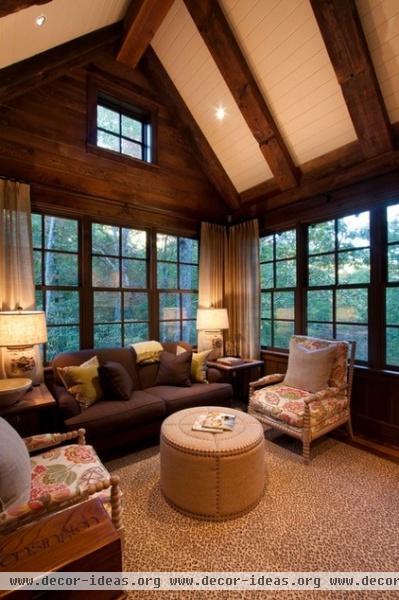
Sherrill likes to use a neutral palette, then introduce variety through light fixtures, accessories and, occasionally, carpeting. Leopard-patterned broadloom adds an unexpected touch of Park Avenue polish to the family room. “We just wanted to throw something in there that you wouldn’t expect to see,” explains Sherrill.
The wife loved the pattern but thought it best to keep the choice a secret from her husband until after it was installed.
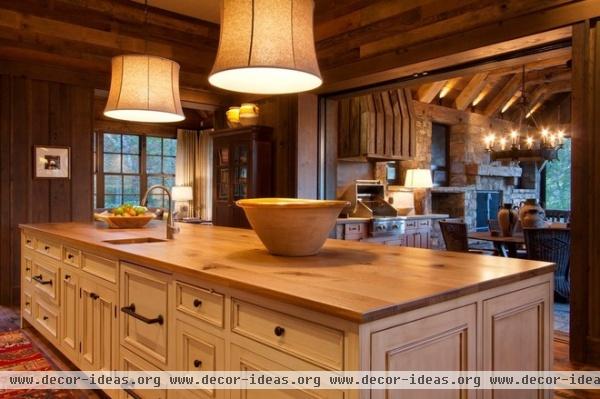
The owners say the kitchen is really the focal point of the whole house — the place where they gather with friends, plus their two grown sons and their families.
The cabinets are made from paint-grade hardwood painted cream, then topped with a walnut glaze. The countertop is reclaimed oak. Pocket doors divide the kitchen from the neighboring screened porch, affording an easy indoor-outdoor flow and convenient access to the grill.
Pendant lights: Visual Comfort
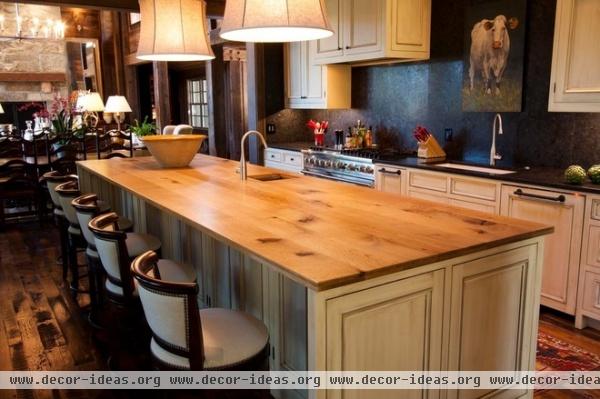
The rear countertop is covered in granite, which continues up the backsplash for a clean, unbroken look. Swiveling stools make it easy to sidle up to the breakfast bar.
Bar stools: MacKenzie-Dow
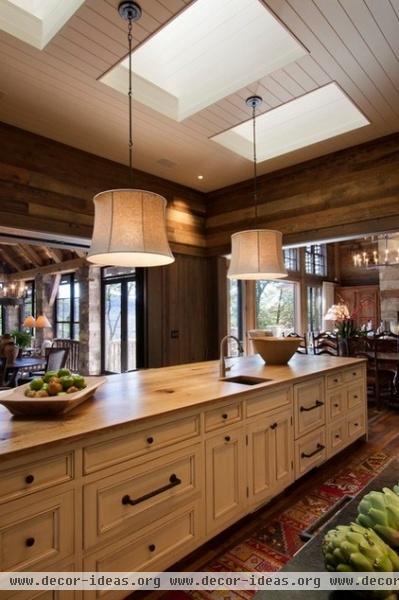
Platt used skylights to bring more illumination into the center of the house. Since conventional skylights would have been inconsistent with the home’s vintage look, the architect set them on roof planes hidden from view on the outside, and obscured by light shafts on the inside — so there’s illumination without a visible source.
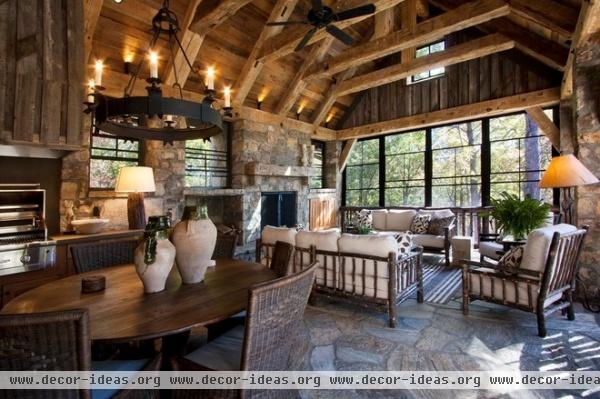
The screened porch was designed like an outdoor living room, and the owners say it’s their favorite room in the house. Hickory pieces from Flat Rock Furniture are grouped around a stone fireplace flanked by a TV (hidden behind the shutters to the right).
Fiberglass screens shield the occupants from insects, while a second, retractable Mylar screen protects the interior from the weather and pollen. Steel beams hidden inside hollowed-out timbers provide structural support without compromising the room’s rustic allure.
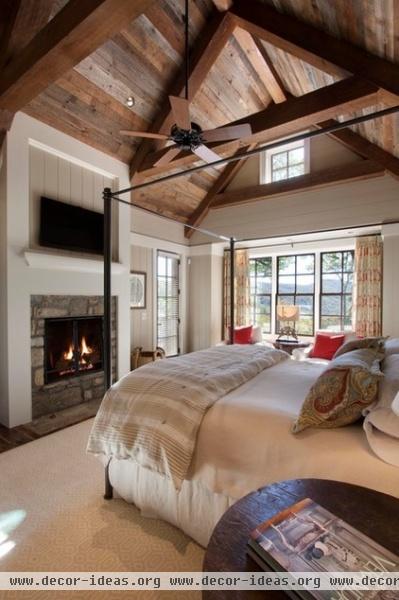
The master bedroom features vaulted ceilings and bucolic views of Sassafras Ridge. The design for the mantel was inspired by a photo the owners found on Houzz.
Bed: Charleston Forge
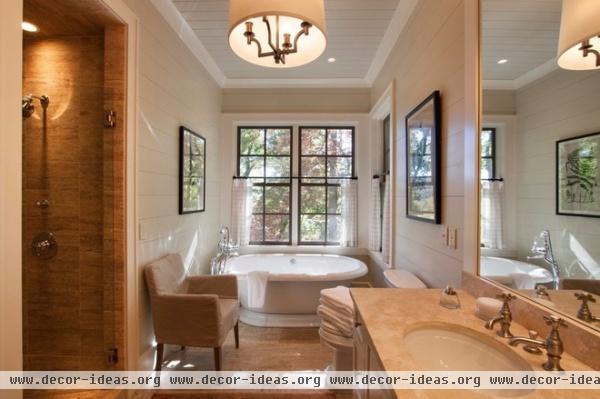
The clients didn’t want any drywall in the home, so rooms that weren’t paneled in vintage chestnut were covered in painted Southern yellow pine.
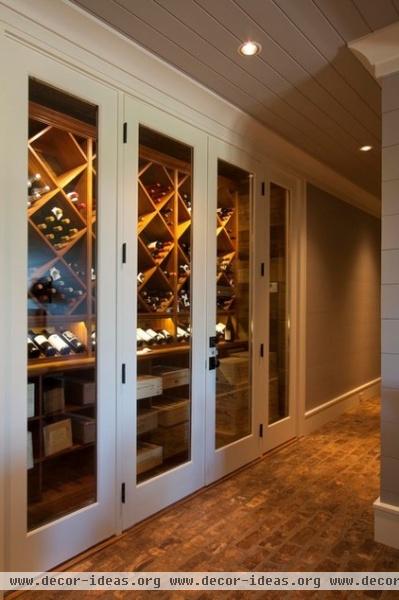
The floors on the lower level are paved with vintage bricks cut into slices, stained, then sealed. The wine cellar can hold 850 bottles.
Flooring: Split Brick
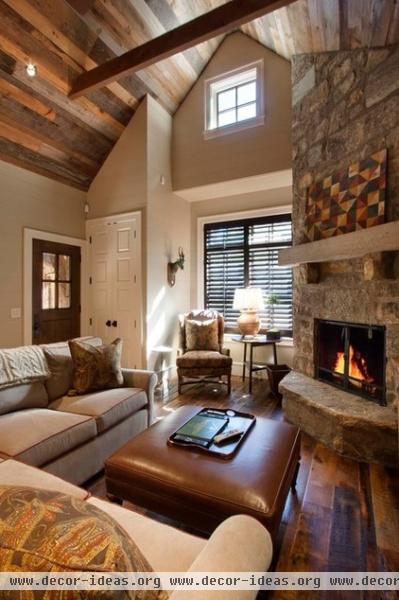
An attached garage separates the main house from the guesthouse, where the owners’ two sons often stay with their families.
The masonry throughout the house is a mixture of Elk Mountain stone from North Carolina and Cumberland Plateau stone from Tennessee. The mortar is fairly flush with the face of the rock, concealing the edges of each stone so that the surface appears smoother and softer.
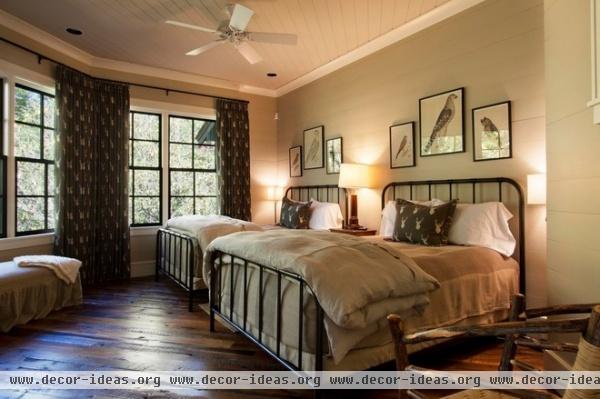
Sherrill spied this unmarked deer head fabric at Lewis & Sheron Textiles in Atlanta and bought up as much of it as she could find. It offers a playful take on a hunting lodge motif for this bedroom in the guesthouse. It also gave the designer a way to introduce pattern, since the wife specified that the house should have no florals.
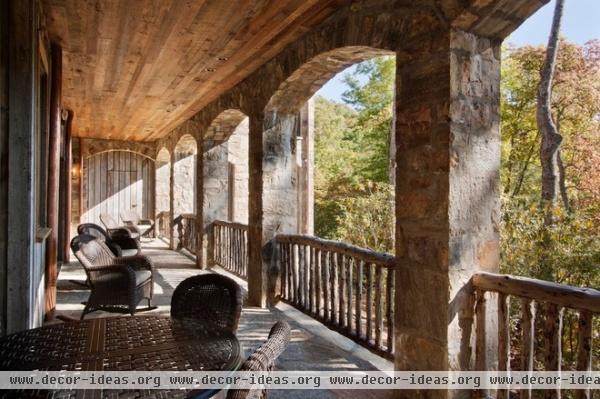
The owners enjoy a leafy outlook from the expansive rear porch. The furniture is from Summer Classics.
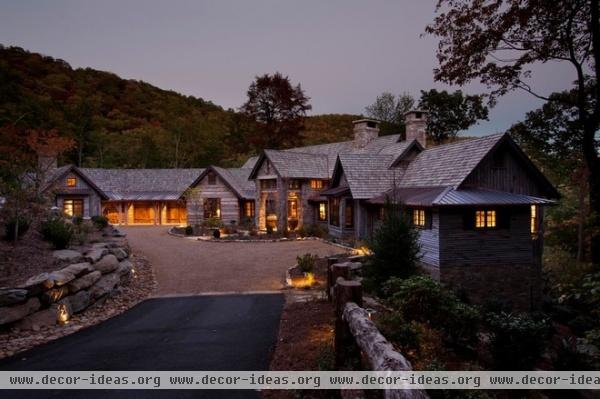
The 4-acre property sits on the back side of a mountain and overlooks the Nantahala National Forest. The owners were attracted by the view and the fact that the site would be easy to build on.
They spend about five months a year here and accommodate visitors in the guesthouse, visible on the far left.
More: So Your Style Is: Rustic












